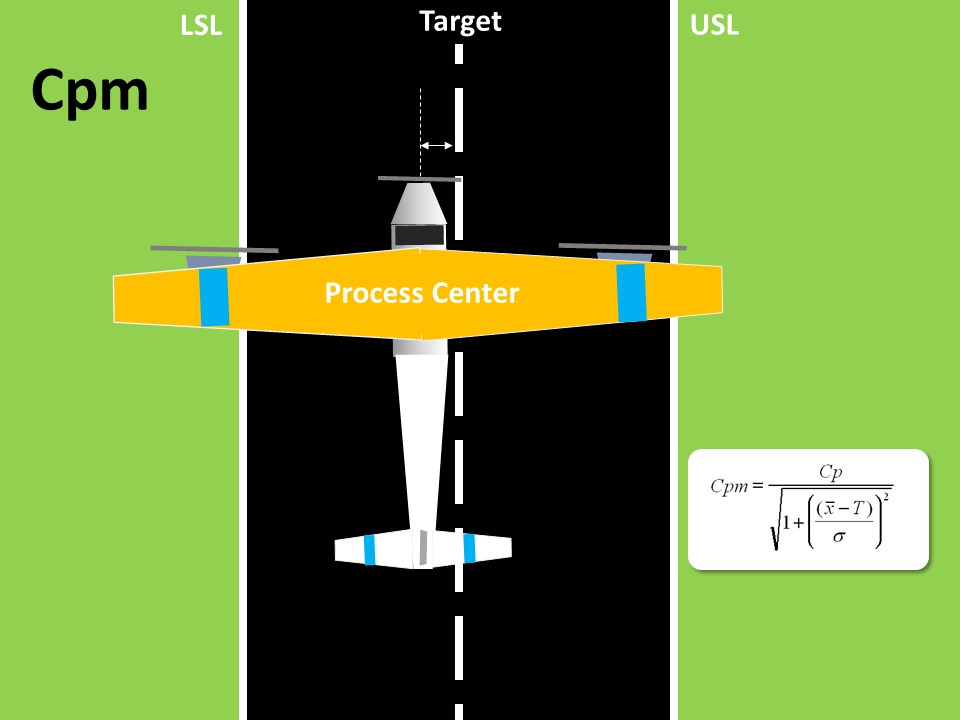Tags
Tags
Tags
Tags
Tags
Tags
Tags
Tags
Tags
Tags
Tags
Tags
Identify
The voice of the customer (VOC) is gathered and converted into technical requirements in this phase. A business case is then established and a project charter is prepared along with milestones. A team is also formed to carry out the project. Roles and responsibilities of the team members are also set during this phase. These activities are accomplished using tools such as Quality Function Deployment (QFD); Failure Modes and Effects Analysis (FMEA); the Suppliers, Inputs, Process, Outputs, and Customers (SIPOC) diagram; the Integrated Product Delivery System (IDPS); target costing; and benchmarking.
Design
In this phase, the concept design is developed by formulating alternative concepts and choosing the best concept after evaluating the alternatives. Risks associated with the chosen concept design are also determined. The functional requirements and their Critical to Quality (CTQ) attributes are identified by the Six Sigma team. The CTQ attributes are deployed after assessing their effect on functional requirements. Raw materials and their procurement plan with the related manufacturing plan are created during this phase. In addition, the Sigma capability is predicted. These activities are accomplished using tools such as smart simple design, risk assessment, FMEA, engineering analysis, materials selection software, simulation, DOE, systems engineering, and the capability of the process is evaluated to verify if the CTQs can be met.
Optimize
The design is optimized for reliability and performance by developing detailed design elements. This helps optimize the Sigma capability and cost. These activities are accomplished through manufacturing database and flowback tools, a design for manufacturability, process capability models, a robust design, Monte Carlo methods, tolerancing, and Six Sigma tools.
Validate
The prototype is tested using formal tools to validate the design. After evaluating the performance, failure modes, and risks of the design, new requirements to be met are sent to manufacturing and sourcing units. The design is iterated until it meets the requirements of the customer. A final phase review to assess the reliability is also carried out to validate the design. The term Verify is also used interchangeably for this phase. These activities are accomplished through accelerated testing, reliability engineering, FMEA, and disciplined New Product Introduction (NPI).
Tags
As a business analyst you are often expected to act as a bridge between a functional domain and the business stakeholders. Business analysts must be great verbal and written communicators, tactful diplomats, problem solvers, thinkers and analyzers. Though you have been extensive training in project management and related areas, using systematic business and management tools such as graphical analysis, data distribution & visualization, statistical discovery, etc are considered to be difficult by many Business Analysts.
Fortunately Lean Six Sigma, which is process improvement methodology provides many of the tools that can be handy for Business Analysts at one place. It comprises of statistical tools and techniques along with visualization tools. There are many tools such as Visual Analysis & Data Discovery tools like Fish-bone, 5 why, in scope-Out scope, Box plots and analytical tools like MSA, Descriptive Statistics, Variation, Correlation and Regression. They are explained in brief as under:
Visual Tools:
There are many tools which a business analyst will learn from Lean Six Sigma Green Belt Certification. We’ll talk about few Visual analysis tools from Lean Six Sigma in brief as under:
- Fish Bone Diagram also called as Cause and Effect Diagram helps to reach the root cause of any business issue. The important characteristic of this tool is to categorize the issue into 6 different aspects like Men, Machine, Material, Measurement, Method and Mother Nature (Environment). This will help the analyst prioritize the problem and solve the problem in a systematic manner.
- Another tool for root cause analysis is 5-Why which involves repeating the question “Why” where each question forms the base of the next question and this will go on until the root cause is found. All the questions and answers of the 5 Why, are placed on a sheet of paper with the help of which the analyst can view the whole picture in a single page.
- Box plot is a quick way of visualization of data and is represented in the form of box & whiskers. It helps in scrutinizing and comparing sets of data which demonstrates the variation in the sample data set.
- Statistical process control (SPC) is method of measuring and controlling KPIs of any process. AKA control charts, this helps to proactively identify issues from data. It is a great tool for continuous monitoring of process parameters both in service and manufacturing processes.
- Run charts are similar to control charts and suggest shifts in the process over a period of time and points out special factors which influence the process variability.
- FMEA stands for Failure Modes and Effect Analysis which is an approach to identify all possible failures in any process. Like doing analysis of how and where we can fail so as to take precaution before even starting the implementation of any project. This is a very important element for the success of any project which will help a business analyst in his/her daily management.
Analytical Tools:
Here are few examples of data discovery analytical tools that a Business Analyst will learn from Six Sigma.
- Quite often Business Analysts struggle with poor data quality. MSA aka Measurement System Analysis is a Lean Six Sigma tool used to evaluate that whether the data collection method, the instruments/source used for measuring and whole measurement is precise & accurate or not. This is also used to ensure the integrity of data used for analysis and gauge the effects of errors in measurement used to make decisions taken for product or processes.
- Descriptive statistics includes the assessment of central tendency and measures of dispersion in the any data set. Further it helps to identify skewness, kurtosis, outliers, and specific patterns in the distribution.
- Analysis of Variance abstracted as ANOVA is a statistical hypothesis test used to identify significant factors that cause a particular business issue. The biggest the merit of such advanced statistical methods is in confidence & credibility that a Business Analyst can provide to the leadership and management on his analysis and conclusions.
- Correlation & Regression are similar tools used to establish a relationship between the two business variables such as revenue and capacity. By validating such relationships, the Business Analyst can bring out significant insights to the management.
A business analyst having Green Belt Certification shall have a comprehensive understanding of Lean six sigma and shall be able to apply its tenets to their daily work. The principles of Six Sigma are so widely applicable that employees getting trained are highly valued and aggressively sought after. Lean Six Sigma Certification will be a stepping stone for professionals to a higher level as you avail expertise in different problem solving tools and techniques of Lean Six Sigma.
Tags
Improve phase is the fourth phase of Lean Six Sigma projects. Following are the deliverable of this phase:
Identify Solutions to overcome the impact of root causes
For each of the root causes identified in the Analyze phase, the Lean Six Sigma Team uses an apt structured or unstructured brainstorming method to generate various alternatives to overcome the problem. These techniques may include Channeling, Anti-solutions, Analogy, Wishful thinking, Random word stimulus methods, etc.
SCAMPER is another popular method which can be used by the Six Sigma Green Belt to systematically improve the current process using any of the following methods: Simplify or Substitute, Combine, Adapt, Modify, Put to different use, Eliminate & Reduce.
If there are too many options that the team has identified, then a variety of solution screening methods can be used to select the best solution for implementation. These screening methods include NGT (Nominal Group Technique), N/3 Voting, Criteria Based Matrix (CBT), etc.
Proposed solutions can be a new process, technology change, policy changes, alterations of inputs, measurement system refinement, customer, employee or vendor education, etc. In such cases, either revised process map, future state value stream mapping, etc., may need to be proceeded.
The solution that the team has selected should directly impact the CTQ of the project. Six Sigma Green Belt should validate this.
Refining the Solutions (FMEA, Poka-Yoke)
Before implementing solutions, the Six Sigma Green Belt needs to ensure that the proposed solutions are complete and well refined. This will ensure that there are no delays, rework during implementation, and the full impact on CTQ is derived. In order to do this, a tool called Failure Modes Effect Analysis (FMEA) is used. The main purpose of this tool is to assess all the risks involved with a solution, and how to mitigate them by refining the solution before implementation. Risk Priority Number (RPN) derived from FMEA helps in prioritizing the risks and acting on them in a systematic manner.
Mistake-proofing (Poka-Yoke, in Japanese) is a method used to ensure that the proposed solution doesn’t create additional defects or errors. This can be used in conjunction with FMEA.
Pilot Solutions
Now the solution is ready for pilot. The purpose of the pilot is to assess its impact in a control group setting. Based on the qualitative and quantitative results of the pilot, necessary alternations can be incorporated to the final solution. Six Sigma Green Belt should closely work with the process owners during pilot to understand ground realities and build ownership.
Statistically validate results
In Lean Six Sigma Projects, it is an important step to statistically validate the impact on CTQ (before implementation & after Implementation). Hypothesis tests like 2-t test, ANOVA, Chi-square tests, etc., are used to perform this statistical validation. These tests help to identify if the improvement is significant or marginal in nature. Six Sigma Green Belt should be able to select and perform appropriate tests using statistical softwares.
On successful completion of these deliverable and formal Improve tollgate review, the Lean Six Sigma project team is ready to move to the Control phase. Next >>>
Tags
Improve phase is the fourth phase of Lean Six Sigma projects. Following are the deliverable of this phase:
Identify Solutions to overcome the impact of root causes
For each of the root causes identified in the Analyze phase, the Lean Six Sigma Team uses an apt structured or unstructured brainstorming method to generate various alternatives to overcome the problem. These techniques may include Channeling, Anti-solutions, Analogy, Wishful thinking, Random word stimulus methods, etc.
SCAMPER is another popular method which can be used by the Six Sigma Green Belt to systematically improve the current process using any of the following methods: Simplify or Substitute, Combine, Adapt, Modify, Put to different use, Eliminate & Reduce.
If there are too many options that the team has identified, then a variety of solution screening methods can be used to select the best solution for implementation. These screening methods include NGT (Nominal Group Technique), N/3 Voting, Criteria Based Matrix (CBT), etc.
Proposed solutions can be a new process, technology change, policy changes, alterations of inputs, measurement system refinement, customer, employee or vendor education, etc. In such cases, either revised process map, future state value stream mapping, etc., may need to be proceeded.
The solution that the team has selected should directly impact the CTQ of the project. Six Sigma Green Belt should validate this.
Refining the Solutions (FMEA, Poka-Yoke)
Before implementing solutions, the Six Sigma Green Belt needs to ensure that the proposed solutions are complete and well refined. This will ensure that there are no delays, rework during implementation, and the full impact on CTQ is derived. In order to do this, a tool called Failure Modes Effect Analysis (FMEA) is used. The main purpose of this tool is to assess all the risks involved with a solution, and how to mitigate them by refining the solution before implementation. Risk Priority Number (RPN) derived from FMEA helps in prioritizing the risks and acting on them in a systematic manner.
Now the solution is ready for pilot. The purpose of the pilot is to assess its impact in a control group setting. Based on the qualitative and quantitative results of the pilot, necessary alternations can be incorporated to the final solution. Six Sigma Green Belt should closely work with the process owners during pilot to understand ground realities and build ownership.
Statistically validate results
In Lean Six Sigma Projects, it is an important step to statistically validate the impact on CTQ (before implementation & after Implementation). Hypothesis tests like 2-t test, ANOVA, Chi-square tests, etc., are used to perform this statistical validation. These tests help to identify if the improvement is significant or marginal in nature. Six Sigma Green Belt should be able to select and perform appropriate tests using statistical softwares.
On successful completion of these deliverable and formal Improve tollgate review, the Lean Six Sigma project team is ready to move to the Control phase. Next >>>
FMEA is performed to refine a solution just before its implementation, or at the beginning of a project; to investigate if there is a possibility for any anomalies or risks arising during the process. In simple words, FMEA is a plan to lessen or eradicate risks associated with the process or proposed solutions. It is not only applicable in a Six Sigma project, but also in any IT project management and general purpose risk analysis/risk management.
Any anomaly or element can be considered as risk depending on the severity of its impact, frequency of occurrence of its cause, or the incapability of the control system to detect a cause. A risk rating called Risk Priority Number (RPN) can be used as a yardstick to prioritize and proactively mitigate risks; and to create the required focus within the organization to deal with risks. It is calculated as the product of the severity of the effect, into the occurrence of the root cause, into the detection of root cause.
- Severity is a rating that represents the seriousness of the effect(s) of the potential failure mode on customers or business – the more the severity, higher is the rating.
- Occurrence is a rating that represents the likelihood or frequency of occurrence of a specific cause – the more often it occurs, higher is the rating.
- Detection is a rating that represents the ability of the current control mechanism to detect or report occurrence of the cause – lower the ability to detect a cause, higher is the rating.

While the overall objective is to mitigate risks with high RPN, there can be multiple different strategies to do so. We can use 4 such strategies in the following order.
The 4 strategies for FMEA that can help you quickly reduce the overall risk rather than flounder.
Strategy 1 – Reduce the occurrence of cause
In a FMEA, consider all the high RPN items, and select the ones with high Occurrence rating. If the occurrence rating is high, then by reducing the frequency of occurrence of cause, you will reduce the number of times failure occurs. This is the most apt and best strategy to adapt as it directly addresses the core issue. However, situations may warrant you to consider other strategies.
Strategy 2 – Reduce impact of failure mode
In a FMEA, if we don’t have high occurrence ratings, then consider all the high RPN items and select the ones with high Severity rating. These are the ones that will create maximum negative impact on a customer, their business, and thus in fact on your business too.
By reducing the impact of the effect, you can show the immediate visible impact to customers. Particularly, if there have been escalations from customers, then this strategy will be best suited.
Strategy 3 – Improve the ability to detect risk
In a FMEA, when above strategies aren’t relevant, consider all the high RPN items, and select the ones with high Detection rating. Improving the detection mechanisms means that we have timely information to prevent the cause, or at least contingency, or mitigation.
Conventional risk planning usually focuses on this strategy as first priority.
Strategy 4 – Combination of all three strategies
If all three ratings are high & none of the above can be applied in isolation, then see if they can be combined & applied.
By following the above 4 strategies in a FMEA, we can systematically and quickly reduce risk in any process or solution in Six Sigma Project.






